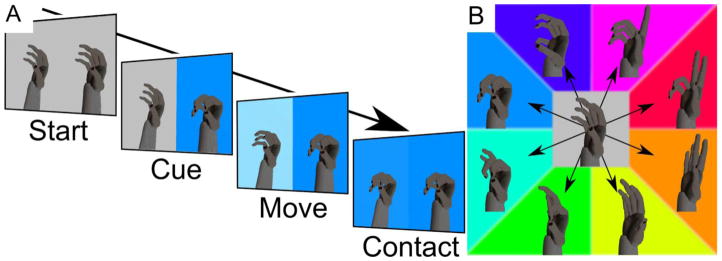Figure 1.
Virtual hand grasping task. A) The task display featured a target hand posture and background color on the right and the brain controlled avatar hand with a colored background (representing the current location in the state-space) on the left. Each trial consisted of i) Start both – the target hand and avatar hand were returned to a neutral posture, ii) Cue – the target hand was moved abruptly to one of eight possible hand postures while the avatar hand remained fixed for 300 ms, iii) Move – the avatar hand moved under brain control, the example video frame shows the avatar hand (left) midway to the flexed power grasp target posture (right); the less saturated blue (left) also instructs the monkey more flexion is necessary to match the fully saturated blue (right), and iv) Contact – the avatar hand is within the flexed power target boundaries. B) The eight different target hand postures along the four different grasp dimensions are shown schematically, collapsed into a two-dimensional arrangement. Each of the four grasp dimension has target flexion and extension hand postures (with associated colors) – precision pinch (green/magenta), three-finger tripod (cyan/red), power grasp (blue/orange), and thumb and little finger opposition (indigo/yellow). These four dimensions were mapped to the 20 DOFs of the virtual hand.

